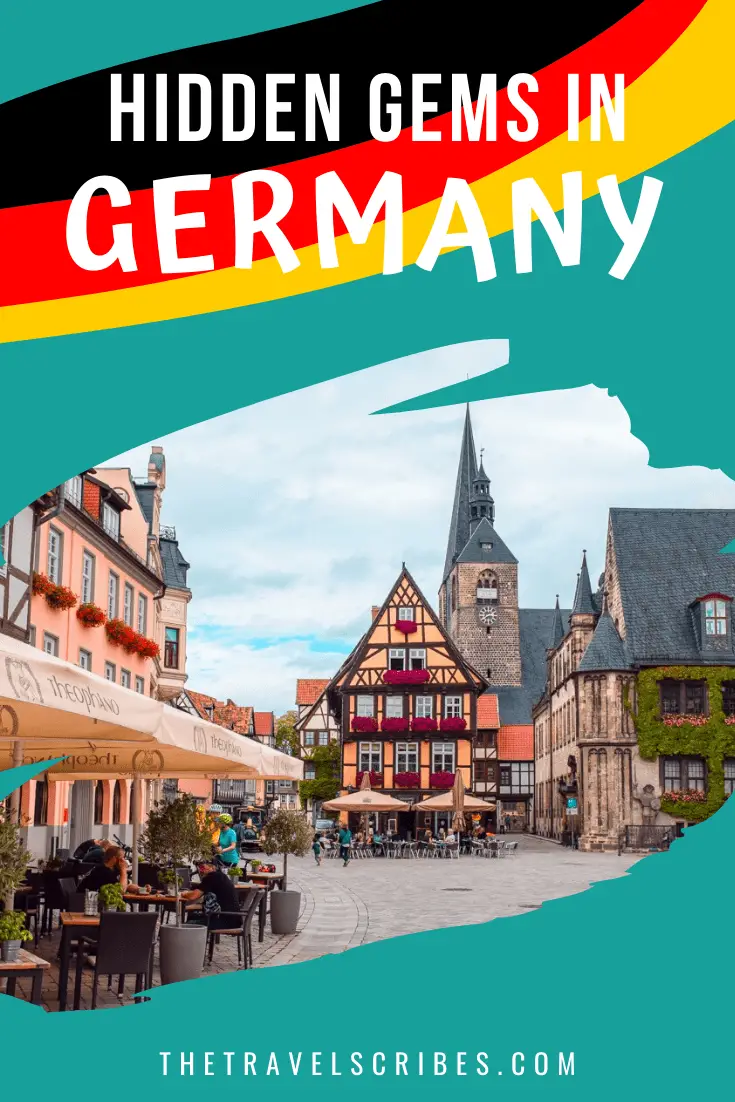After 5 years living in ‘Deutschland’, in both Bonn and Cologne, we felt it was time that we recount the best hidden gems in Germany. But not only have we included our personal must-visit spots, but we asked the travel community to suggest some of their favourite unique places to visit in Germany.
Let’s be honest, due to the rise of Instagram, some of these may be not such ‘secret’ locations anymore but definitely every stop on here deserves a little bit of recognition. So, from romantic castles to the fairy-tale towns, let’s see what’s made it onto the list…!
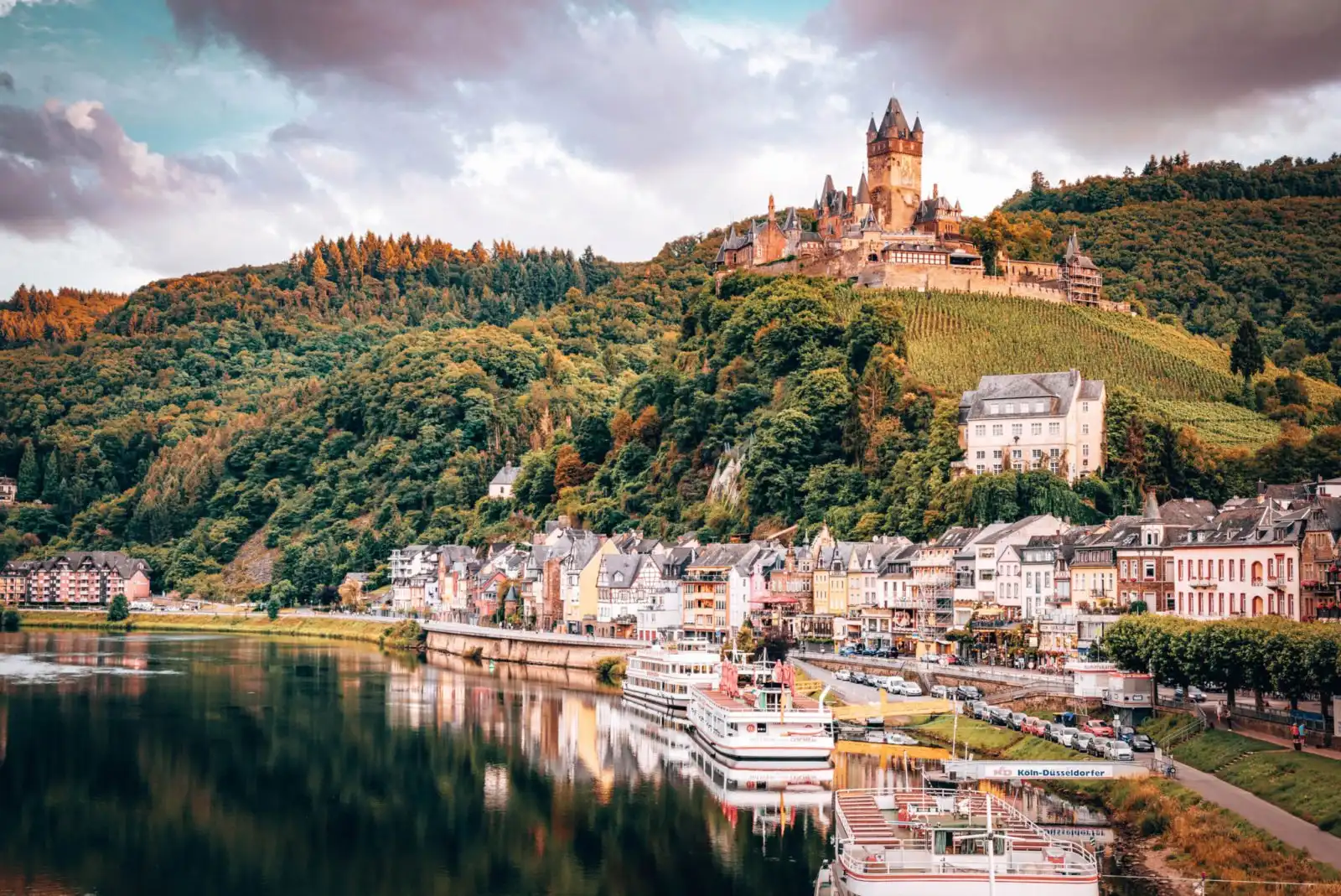
Read next: The best hidden gems in London, United Kingdom
Skip ahead
Our Top 10 best hidden gems in Germany
- Rothenburg ob der Tauber
- Quedlinburg
- Burg Eltz
- Gorlitz
- The Saxon Switzerland
- Geierlay Hanging Bridge
- Hohenzollern Castle
- Königssee
- Lichtenstein Castle
- Rakotzbrucke
Rothenburg ob der Tauber
Explored by Lee from the Travel Scribes
This city is a bit of an insider joke in Germany since you ask any German and they’ll scratch their heads in confusion. It turns out that Rothenburg, the start of Germany’s Romantic Road, is a bit of a ‘tourist’s tale’; albeit one that is stunningly beautiful. Think traditional timbered houses, winding village streets and old-world German charm in spades.
The town, meaning Red Fortress above the Tauber, is set in Bavaria overlooking the Tauber River and unsurprisingly has features in a number of well-known films, including Harry Potter and the Deathly Harrows, Chitty Chitty Bang Bang and the inspiration for Walt Disney’s Pinocchio. In this pictureque town, you can walk the city walls, visit the justice museum or even just roam the beautiful cobbled streets, since there are a surpring number of things to do in Rothenburg!
Insider Tip: If you’re in the Bavarian capital it’s just about achievable to make visiting Rothenburg ob der Tauber as a day trip from Munich, with it being about a 2.5 hour drive from the city.
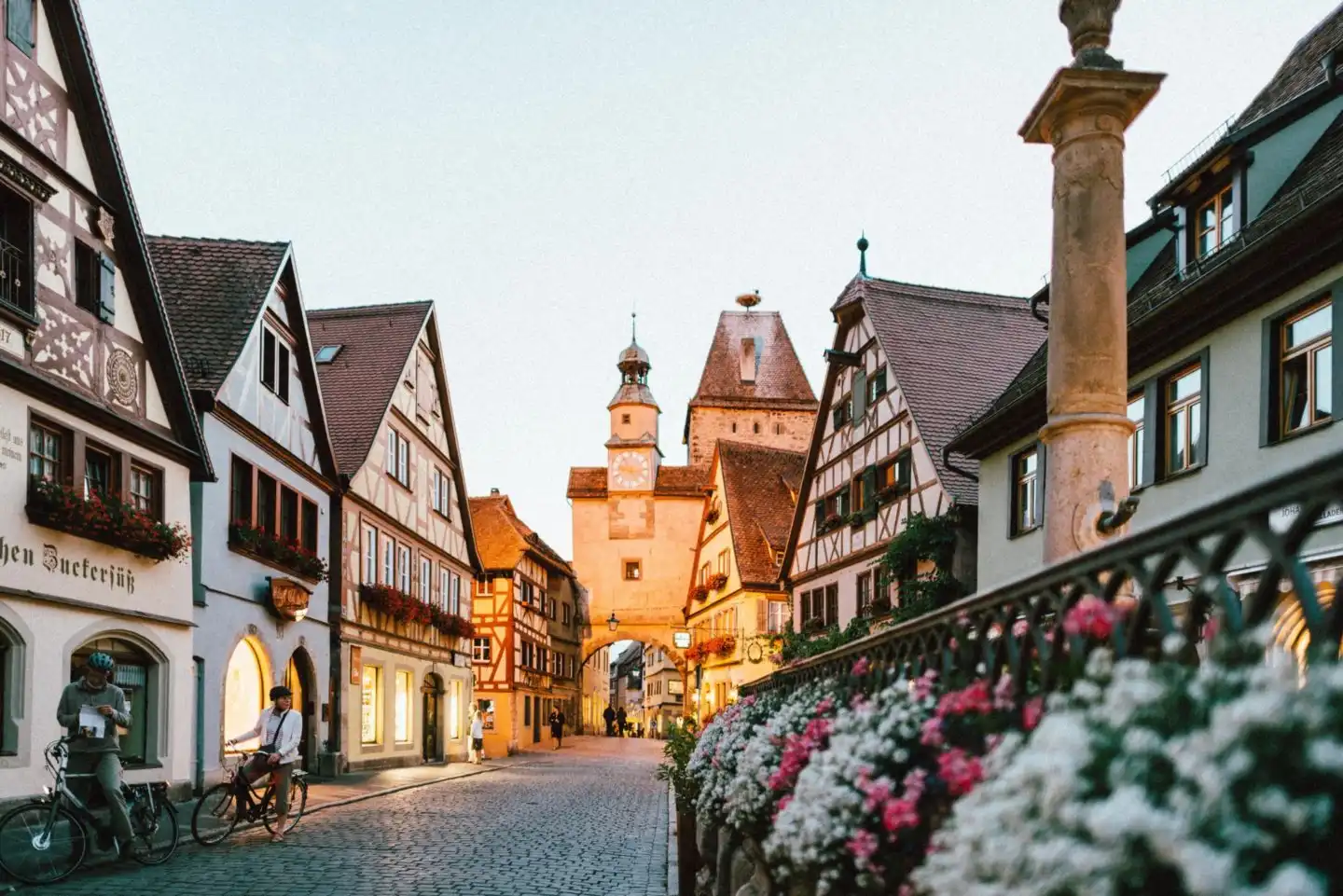
Quedlinburg
Explored by Lyubomira of Bulgarian On The Go
Located in the northern parts of Germany, only 3 hours away from Berlin, you will find one of the prettiest and most quaint little towns in the country, Quedlinburg.
Quedlinburg is known for its medieval vibes and typical half-timbered houses, which are so unique that in 1994 the old town was added to the UNESCO World Heritage list. As a matter of fact, it is considered one of Europe’s best-preserved medieval renaissance towns.
Quedlinburg is easily walkable and can be explored within a day, which makes it perfect for a day trip. Some of the most important highlights of the city include the castle, the church of St. Servatius, the city hall and all of the old town. Find more things to do in Quedlinburg here. Make sure to stop by the tourist information to grab a city map and learn about the guided tours the city provides.
Quedlinburg is not very known among non-German tourists, which makes it a perfect hidden gem to discover before everyone else does. Once I set foot there, I couldn’t believe my eyes and the beauty I was surrounded by – it literally felt like being in a fairy-tale.
Despite it being less known, the town is easily reachable by car, train or even Flixbus.
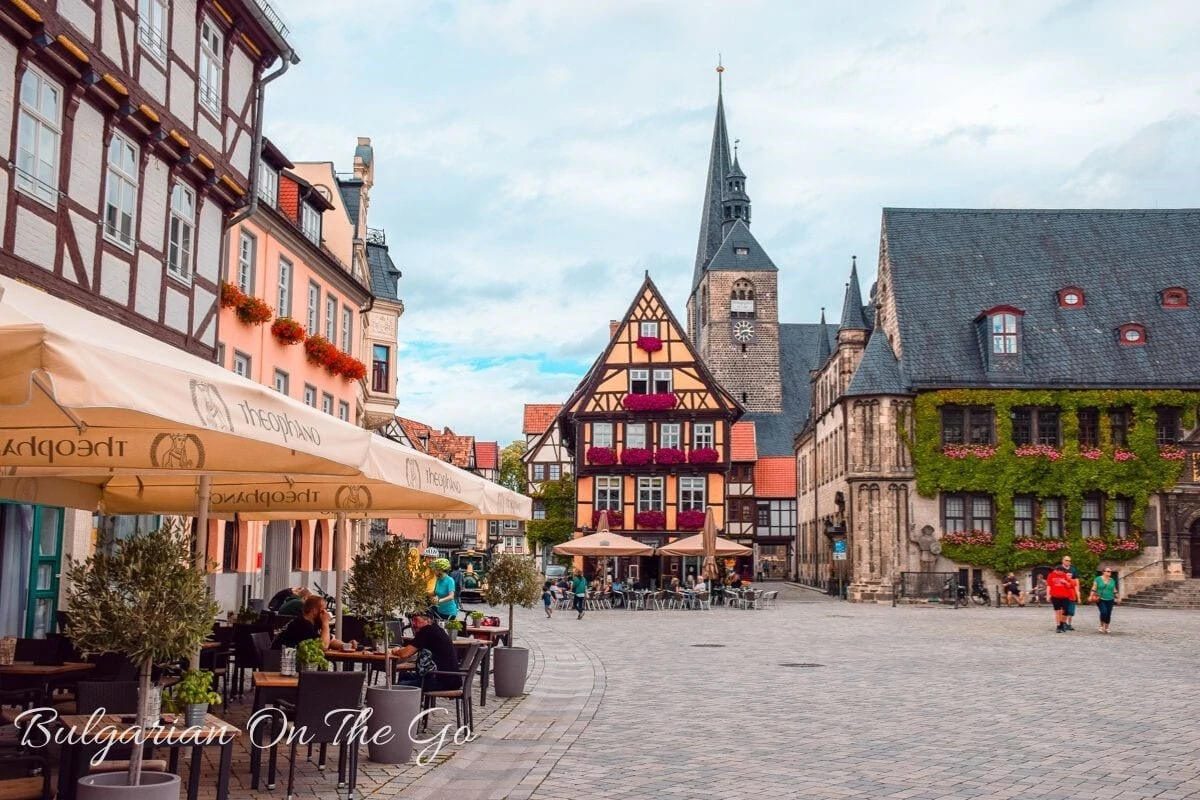
Burg Eltz
Explored by James from the Travel Scribes
Move over Neuschwanstein, hello Burg Eltz! This is our absolute favourite castle in Germany and one of the best places to visit! It’s worth the 10 minute forest walk since, as you turn the corner, you’re confronted by this imposing building, rising up out of the rocks and into the sky. Thanks to Instagram, in recent years the castle has become a bit of a visitor’s mecca, so we recommend heading there very early. English tours take place every 15-20 minutes.
Insider Tip: make sure you go to Cochem when visiting Burg Eltz!
Germany’s Mosel (or Moselle) Valley is a delight for hikers, castle lovers and wine aficionados alike. And there is no better start to the Valley than the riverside town of Cochem. The town is jammed full of quaint restaurants, usually has local bands performing in the square and not only has an impressive castle looming over it, but is surrounded by almost vertical vineyards, producing some of the most delicious Riesling white wine. Stop at Café Germania for a waffle and a glass of Germany’s best.
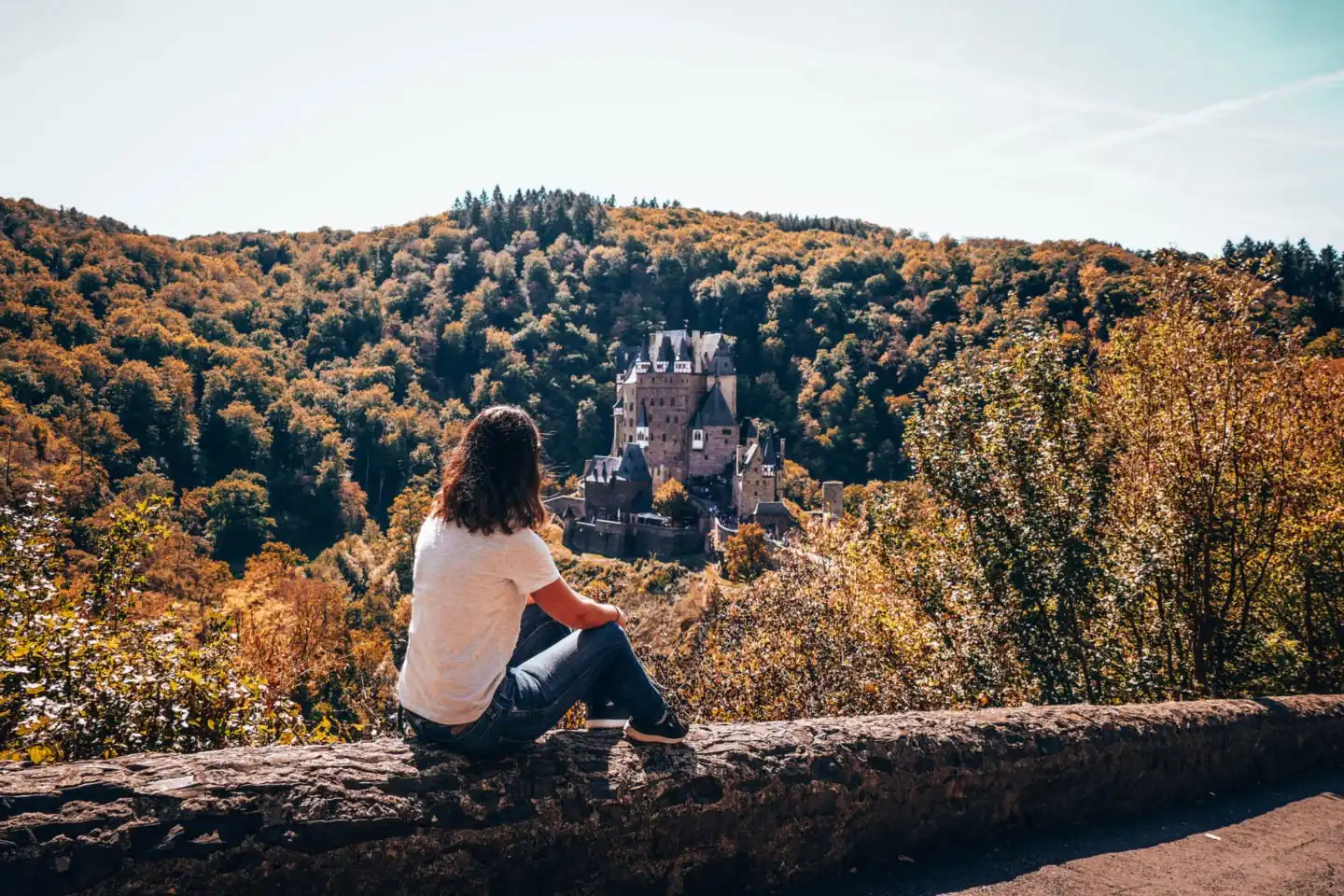
Gorlitz
Explored by Stephanie from History Fangirl
Gorlitz, a colourful gem in the eastern part of Saxony near the Polish border, is perhaps most famous for being the filming location of several important movies. Its colourful historic city centre is the perfect stand-in for multiple bygone eras of European history (though World War II tends to be the most popular choice).
The most notable film to be shot here (and the reason Gorlitz has been put on the map with a certain set of hipster travellers) is the Grand Budapest Hotel. This Wes Anderson flick takes place in a fictional Eastern European town in the fake country of Zubrowka. The town’s entire aesthetic is a Wes Anderson dreamscape, so it was a match made in heaven.
Other movies that have been shot here include The Book Thief, The Reader, and Inglorious Bastards.
While here, cross the bridge over to the town’s sister city of Zgorzelec in Poland.
Most travellers come here as a day trip from Berlin or the closer city of Dresden. However, there’s enough to do here for a few days if you want to settle in and enjoy yourself!
Insider Tip: if you’re driving and stopping here for just a few hours, bring coins to pay for the metered parking!
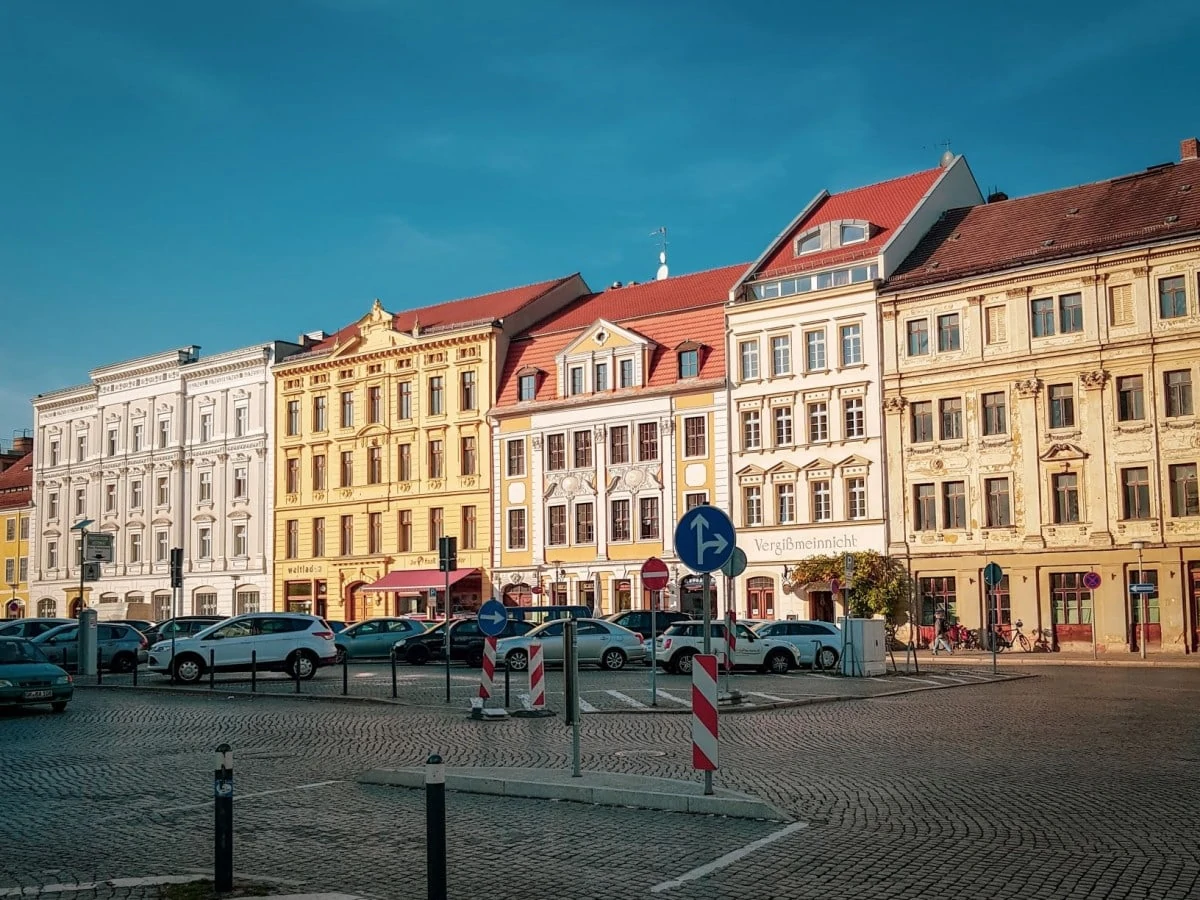
The Saxon Switzerland
Explored by Anna from My Travel Scrapbook
The Saxon Switzerland is a wonderful hidden gem in Germany (spoiler: It’s not actually in Switzerland!)
It is a special place full of mysterious rock formations, foggy mornings, secret caves and epic viewpoints. Visitors have fallen under the magical spell of the Saxon Switzerland since the Romantic Period. Artists such as Ludwig Richter and Caspar David Friedrich have attempted to capture the beauty of this hidden gem but nothing compares to visiting the park for yourself.
There are many things to see and do in the Saxon Switzerland. Whether you are an avid hiker, a water baby or a photographer there is something for everyone. Key sites include the Bastei Bridge, Kuhstall and the River Elbe. Most tourists head to these popular spots.
If you are looking for some hidden gems within the Saxon Switzerland consider visiting the Pfaffenstein which has an old ruin at the top. Alternatively try the area around the Great Winter mountain which is the tallest point in the Saxon Switzerland. Adrenaline junkies may want to try one of the many Klettenstiege or via ferretas in the Saxon Switzerland! You can even stay overnight outside amongst the rocks on one of the so called ‘boofen’ spots. Boofen is a local term for sleeping outside under the unusual rocks in the national park. To truly experience the Saxon Switzerland, bring your sleeping bag and stay there night there!
The Saxon Switzerland is an incredible hidden gem in Germany. Many locals make the most of this national park for example many visit the Saxon Switzerland as a day trip from Dresden. Yet outside of Saxony it is not particularly well known. Go now before everyone discovers how amazing it is!
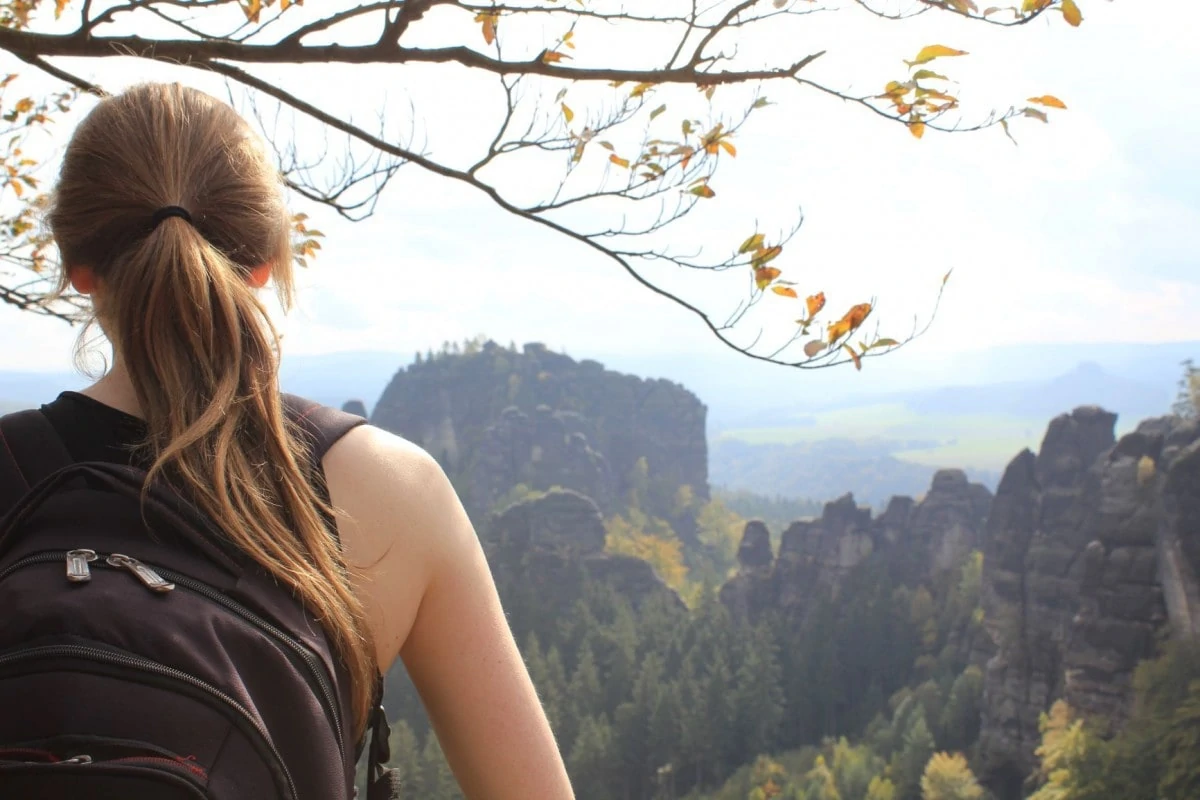
Geierlay Hanging Bridge
Explored by James from The Travel Scribes
Set in the midst of the countryside, Geierlay boasts the country’s longest suspension bridge – 360m long and 100m high. It’s a great location since you can combine it with a longer hike, or just traipse the 2km paved road to see this impressive bridge for yourself.
Built in 2015, the bridge is actually part of the Saar-Hunsrück-Steig, a 400 km hiking route between Trier and Boppard, and although we haven’t walked all that way, we have spent the day hiking the region and loved it!
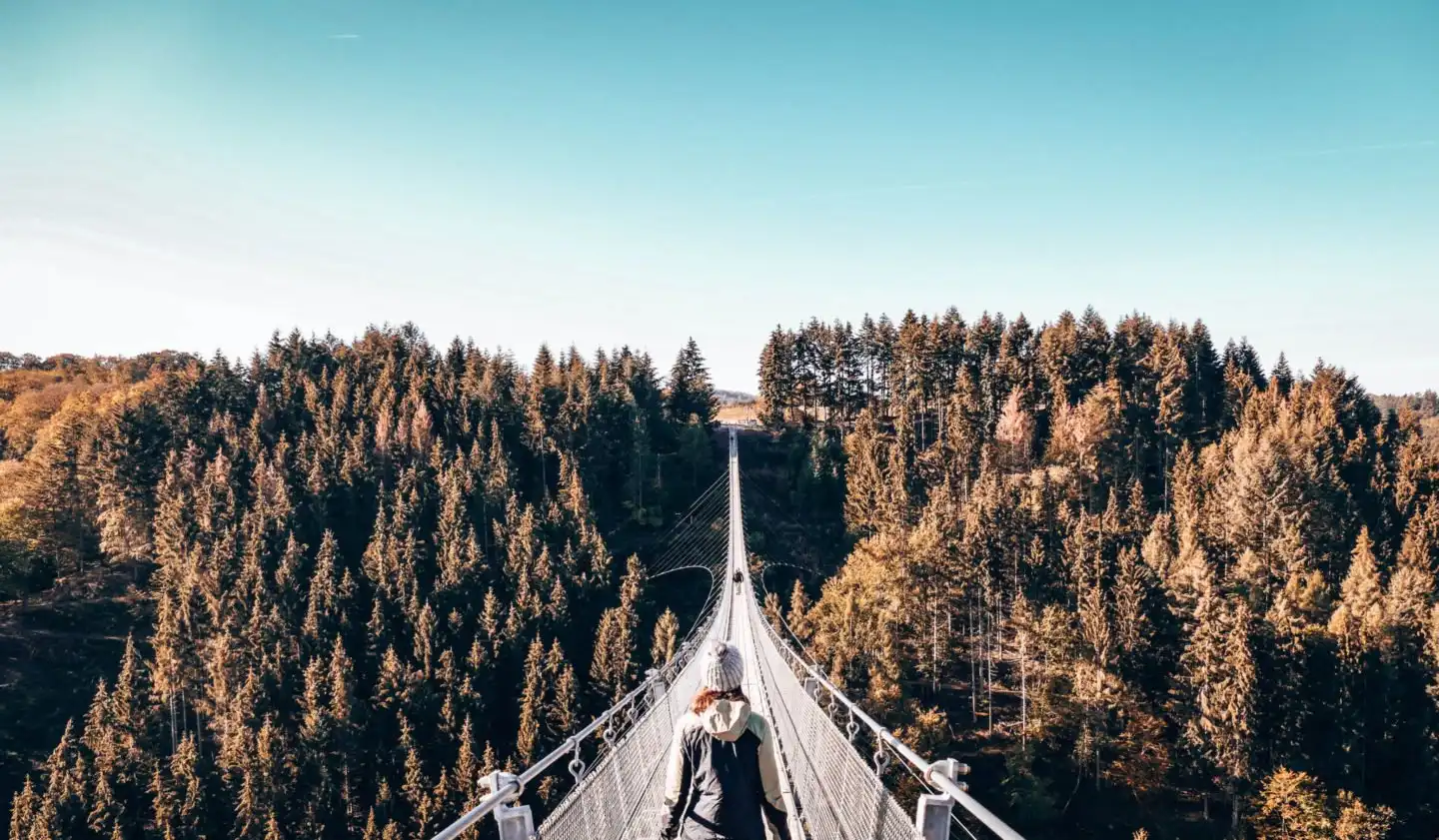
Hohenzollern Castle
Explored by Kat from Wandering Bird
Hohenzollern Castle is one of the most impressive castles in Germany we have ever seen. Perched on the top of a hill (literally!) you can see its silhouette against the skyline as you approach from any direction. I dare you to visit and not wonder how on earth it stays up there!
As well as being impressive, Hohenzollern Castle is also one of the most beautiful castles. The golden stone gleams in the sun and exploring it feels like you’ve stepped into another world.
One of the most intriguing things about the castle is the catacombs, or underground caves, where ammunition and gunpowder was stored. You can walk through this maze of caves and marvel at the effort it took to create them.
The castle is also where the legend of the ‘white lady’ started- a ghost of a woman in white has been seen several times by various people.
Apparently, a wealthy widow who wanted to marry the lord of the castle killed her own children so she didn’t have to bring them into the new marriage! The lord was so disgusted by her actions that he refused to marry her and she ended up killing herself… and has been haunting the castle ever since.
It’s unlikely that you’ll see any ghosts on your visit, but you should definitely add Hohenzollern Castle to your list of places to visit in the Black Forest. It’s on the tour bus circuit, so we recommend arriving as early in the day as possible to enjoy the castle without many tourists.
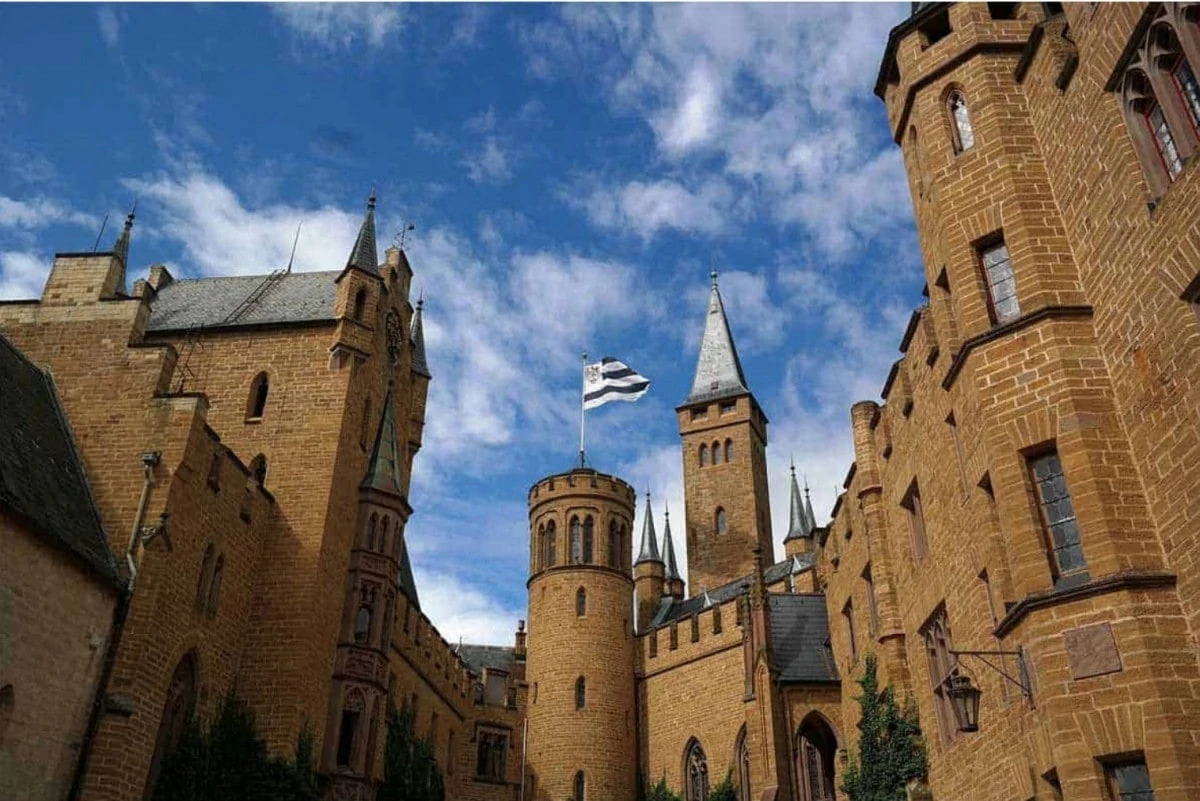
Königssee
Explored by Lee from the Travel Scribes
On the border between Germany and Austria lies one of the most inspiring, jaw-dropping places in the world: the Berchtesgaden national park. Featuring a number of breath-taking lakes, the Königssee is a real stand-out – clear, serene water perfect for a quick paddle in the peace and quiet.
The area also boasts St Bartholomew’s Church, a 17th century lakeside Roman Catholic church.
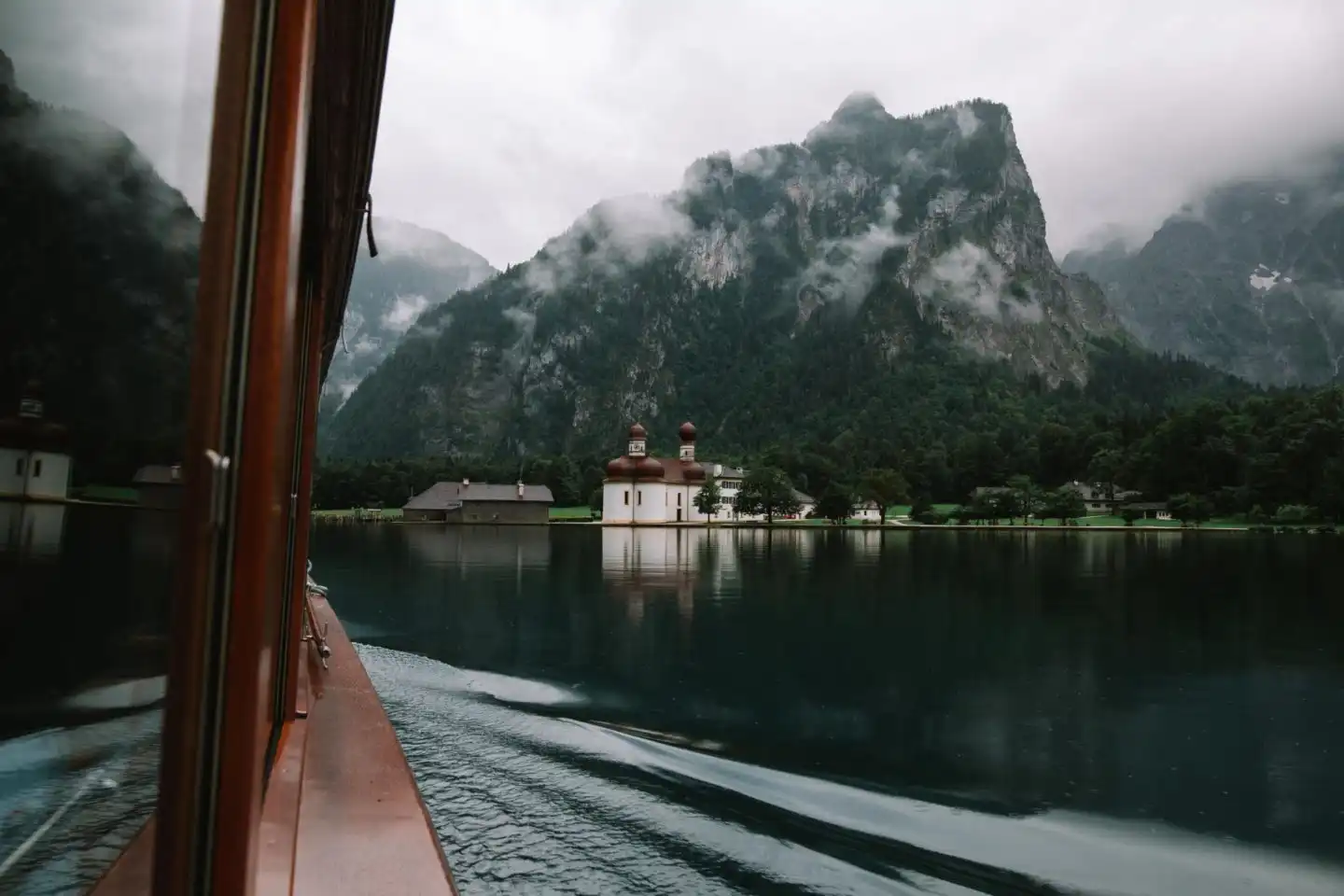
Lichtenstein Castle
Explored by Ann from The Road Is Life
When you think of castles in Germany, it’s the famous Neuschwanstein Castle that likely comes to mind. If you’re not a fan of huge crowds, then Lichtenstein Castle is a great alternative and it’s only a 2 hour drive away. The sight of Lichtenstein Castle will take your breath away. Dramatically clinging to the edge of a cliff and towering over the village below, this spectacular castle is one of southern Germany’s best hidden secrets.
Lichtenstein Castle is tucked away in the forests of Baden-Württemberg. A castle has existed on this site since the year 1100. Over the centuries, the original castle was destroyed and rebuilt a number of times. It was owned by the Lichtenstein family until the 17th century and then purchased by King Frederick I who turned it into a hunting lodge in the early 19th century. In 1842 it fell into the hands of the King’s cousin who then decided to rebuild the castle to its original Gothic style.
When visiting the castle, you have the option of taking a guided tour but because Lichtenstein Castle isn’t overrun with international tourists, the tour is only available in German. If you wish to enter the castle, the only way is by taking the tour. The other option is to buy a ticket for the gardens only which will give you a beautiful view of the castle and surrounding countryside. Lichtenstein Castle looks like it’s been taken straight out of a fairy tale and it’s the perfect addition to any southern Germany itinerary.
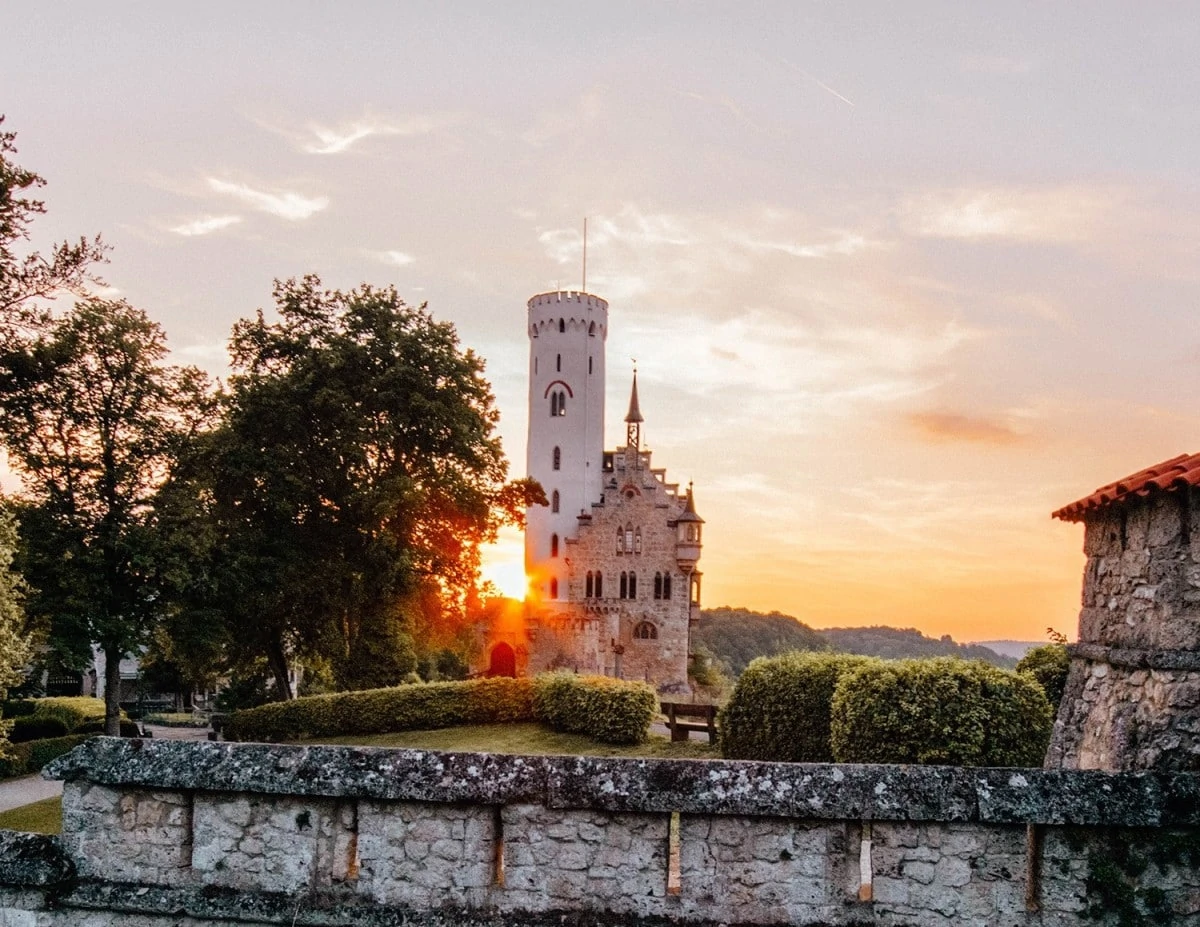
Rakotzbrucke
Explored by Lee from The Travel Scribes
Another ‘fairy tale’ location, the beautiful arched ‘devils bridge’ was built specifically to create a perfect circle when reflected in the water beneath it. The only issue is that the bridge is a little out of the way, so you’ll need to really plan a trip (generally from Berlin) just to see this man-made wonder.
Set in the equally stunning Azalea and Rhododendron Park Kromlau, the bridge which is also known as Teufelsbrücke, can be reached with a short walk from the park’s car park, making it super accessible to anyone.
Insider Tip: Make sure you arrive at the Rakotzbrucke early to get the calm morning water, and place to yourself to capture that perfect shot.
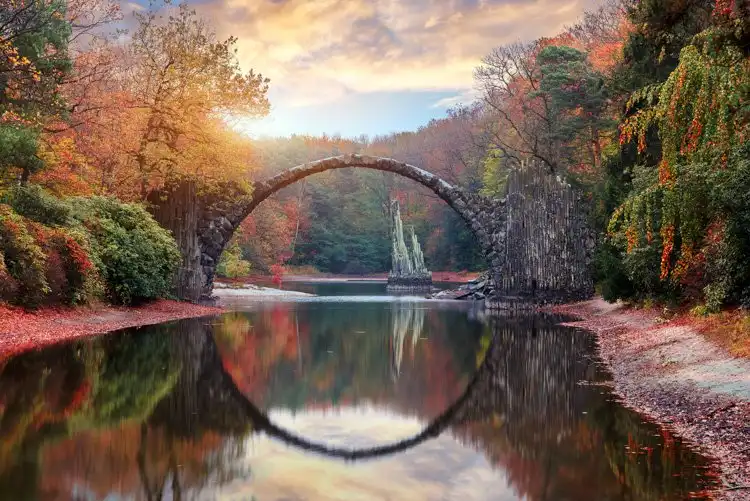
Triberg Waterfall
Explored by Megan and Aram from Meganstarr.com
One of the best hidden gems in Germany is the Triberg Waterfall in the Black Forest town of Triberg. While it may be on some radars if visiting the region, many people simply forget about it and how magnificent of a place it is. Not only is the waterfall a stunning sight as it cascades down the hillside in the middle of the dense forest, the town is also a complete delight. In Triberg, you will find the world’s largest AND the world’s smallest Black Forest cuckoo clocks.
After a day of checking out all of the cuckoo clocks and souvenir shops, you can’t pass up tasting Triberger Fichtenschinken (local Black Forest ham) or a slice of local, Black Forest cake. You can find a variety around the small town, but Restaurant & Pension Bergseestüble is renowned for both and it sits on a small lake near the forest and has a wonderful terrace to enjoy the surroundings while you devour some of their tasty treats.
Triberg is also a hiker’s paradise and you can find hikes of all difficulties there. It is also the perfect destination for families looking for a day trip somewhere in Germany. There are forest obstacle courses and several playgrounds in the vicinity. The entire town exudes true German charm and it is a can’t miss place to visit in the country.
Visiting Triberg is easy from Frankfurt, Freiberg, or Stuttgart if you don’t mind a long day on a train pass. The best time to visit is on the weekend when you can take advantage of Deutsche Bahn’s Schoenes Wochenende ticket.
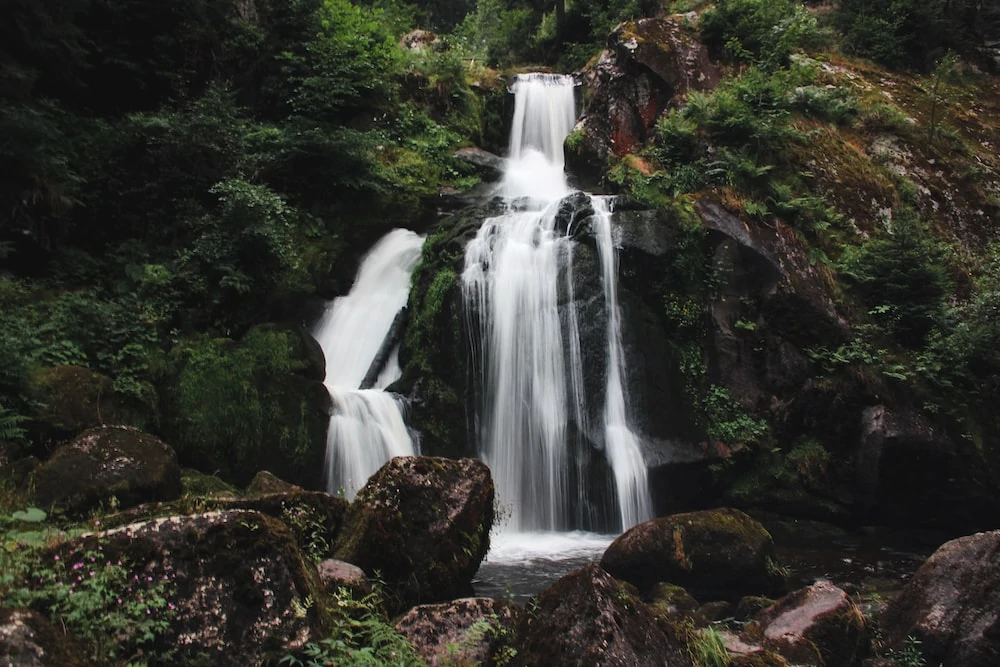
The Palaces of Potsdam
Explored by Megan from Bobo and Chichi
One of our favourite places to visit in Germany and best Berlin hidden gems is Potsdam.
Just an easy 20 to 30 minute train ride from Berlin is this UNESCO World Heritage Cultural Landscape filled with lavish palaces and tons of historical landmarks from pre, during, and post World War II.
There are 16 palaces in Potsdam that make up this gorgeous, historic hidden gem in Germany to visit.
The palaces in Potsdam date back to the 17th century under the Prussian empire when it became a sanctuary of palaces and parks designed in styles influenced from all over the world including Greece, Paris, Rome, and Tudor England for the Prussian kings to escape Berlin to rest and relax as summer residences, retirement, and to be a place without worry.
The most well-known of the palaces include Sanssouci Palace and Park which houses a number of the Potsdam palaces and Cecilienhof Palace that was used for the famous post WWII Potsdam Conference in 1945 with the Big Three leaders of the world.
The best way to visit the palaces of Potsdam quickly are by bicycle or even by boat where you can see many of the palaces from the water.
We recommend not missing the Glienicke Brücke, aka the Bridge of Spies over the Havel River by Babelsberg Palace and Park. This was the famous bridge used to trade spies and is what the famous movie by Steven Spielberg the Bridge of Spies is about.
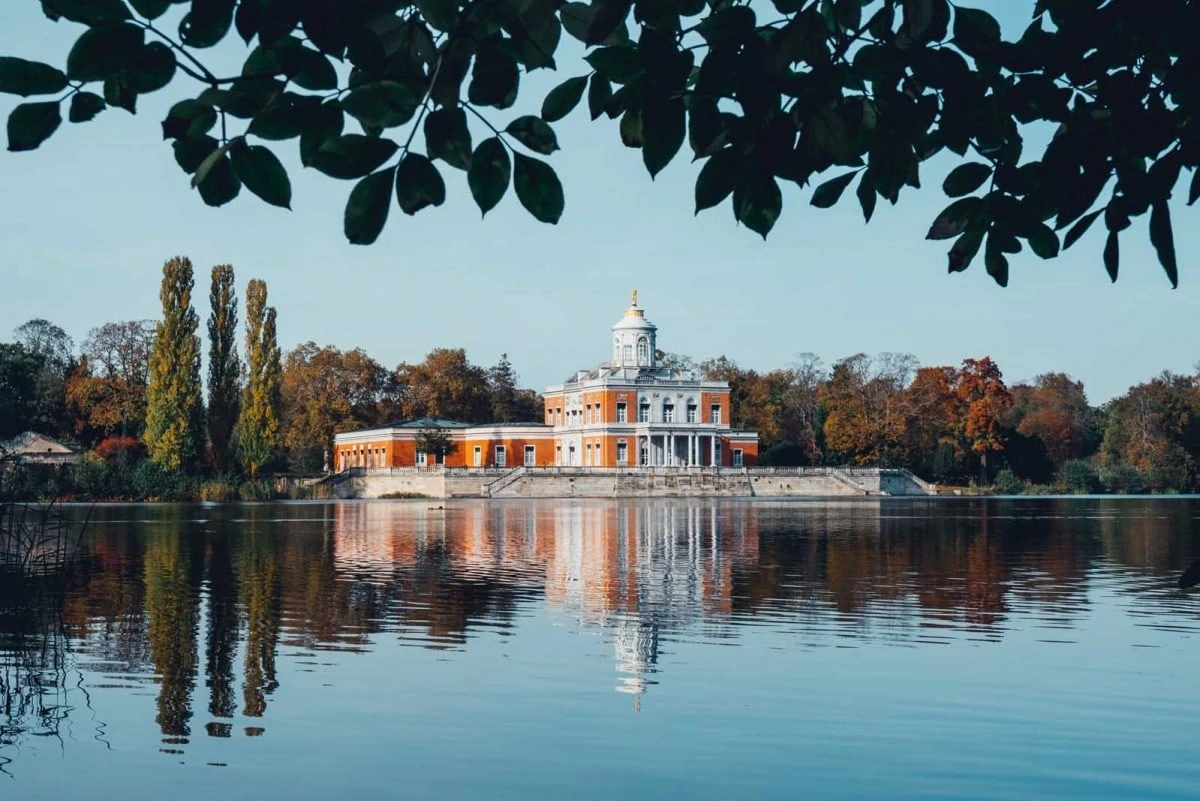
Eibsee
Explored by Alexander from Gourmand Trotter
Eibsee is a wonderful lake with beautiful surrounding nature on the foot of Zugspitze, the tallest mountain in Germany. Despite being easy to access, Lake Eibsee remains relatively unknown, although it’s getting more publicity in social media thanks to its scenic views.
The best time to visit Eibsee is in the morning, when the water in the lake is calm, boasting spectacular reflections of Zugspitze and the thousands of trees lining up along the shoreline.
For those who wish to stay overnight, there is a hotel next to the lake, called Eibsee-hotel. It’s a 4-star hotel with gorgeous views over the lake that allows you to be the first one out there when the sun is rising.
But it’s also worthwhile to come here on a day trip, and visitors can come here via car or bus. There is a parking place next to the lake and, from there, you can start the loop trail that encircles Eibsee. It’s an easy stroll to make, which means that anyone can come here and enjoy the beautiful nature and tranquil atmosphere.
For those that want more of an adventure, it’s possible to rent a boat or kayak and paddle your way to one of several small islets. There are also various hiking trails that go off the loop trail and through the forest, and down to the lake and hidden spots.
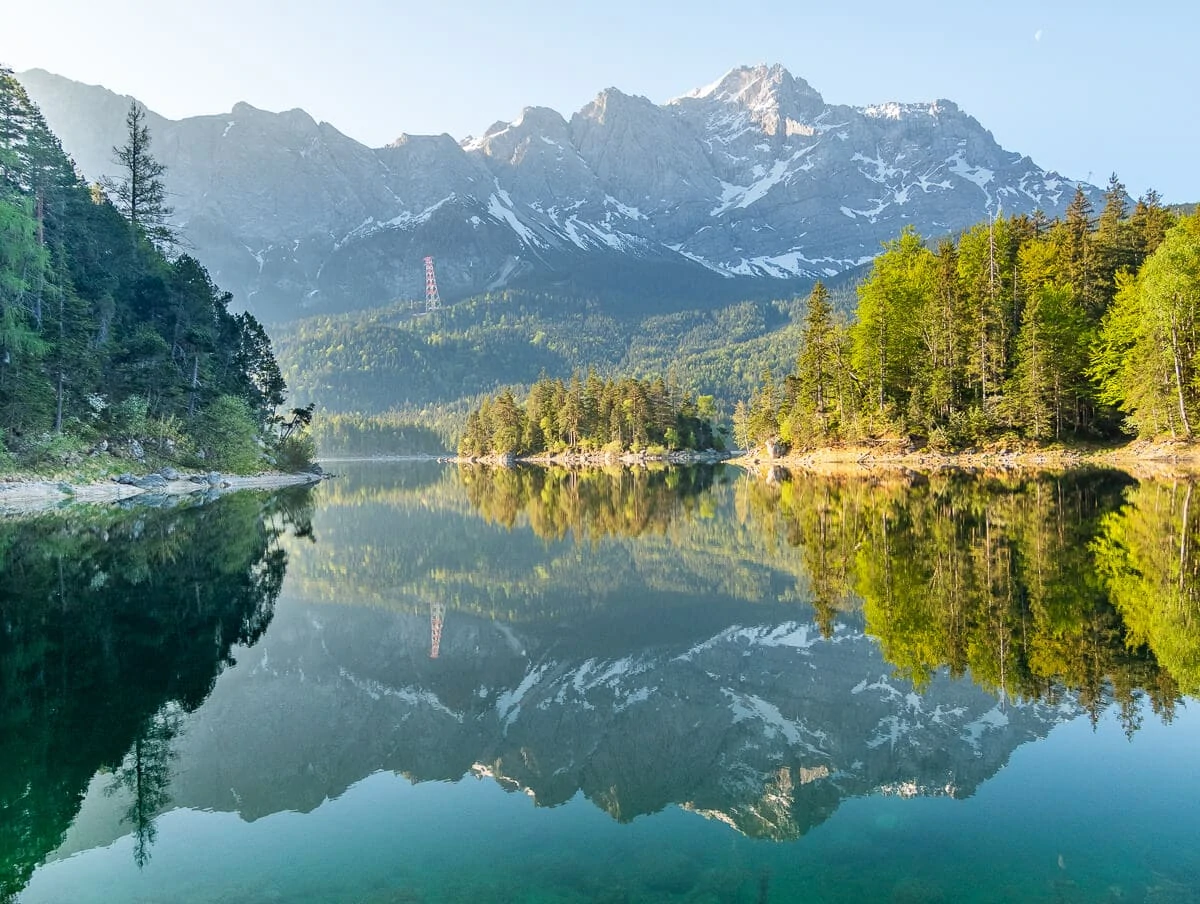
Rostock
Explored by Dhara from It’s Not About the Miles
Looking for hidden gems to visit in Germany? Consider Rostock, on the Baltic Coast in the north of the country. If you are visiting Berlin, a day trip to Rostock is ideal: it’s only about two hours away by fast train.
Rostock has a rich history as an important town in the powerful Hanseatic League. It is also home to one of Europe’s oldest universities. It features a lot of beautiful architecture, much of it destroyed in WWII and since largely restored.
Among the things to do in Rostock is a visit to Neuer Markt, the town’s pretty main square. Of special interest are the six beautiful gabled houses on the square, lovingly restored to their original beauty after the war. Across is the Town Hall, now sporting a pretty pink Baroque facade.
Don’t miss St. Mary’s Church, located just next to Neuer Markt. The church is famous for its astronomical clock. It was saved from large scale destruction in the war.
And finally, visit the Petrikirche, Saint Peter’s Church. Its interior is simple but serene and calming. You can take a lift to the top of the tower for views over the rooftops of Rostock.
On your walk around the town, you will also parts of the old city wall, built by the wealthy Hanseatic merchants, or one of the city gates. You can also see the university buildings along Kopeliner Strasse.
It should take you about four to five hours to walk around the town, with a break for lunch. You can also visit Rostock for longer than the day: it is a beautiful town by the water, and also nearby is the resort of Warnemunde.
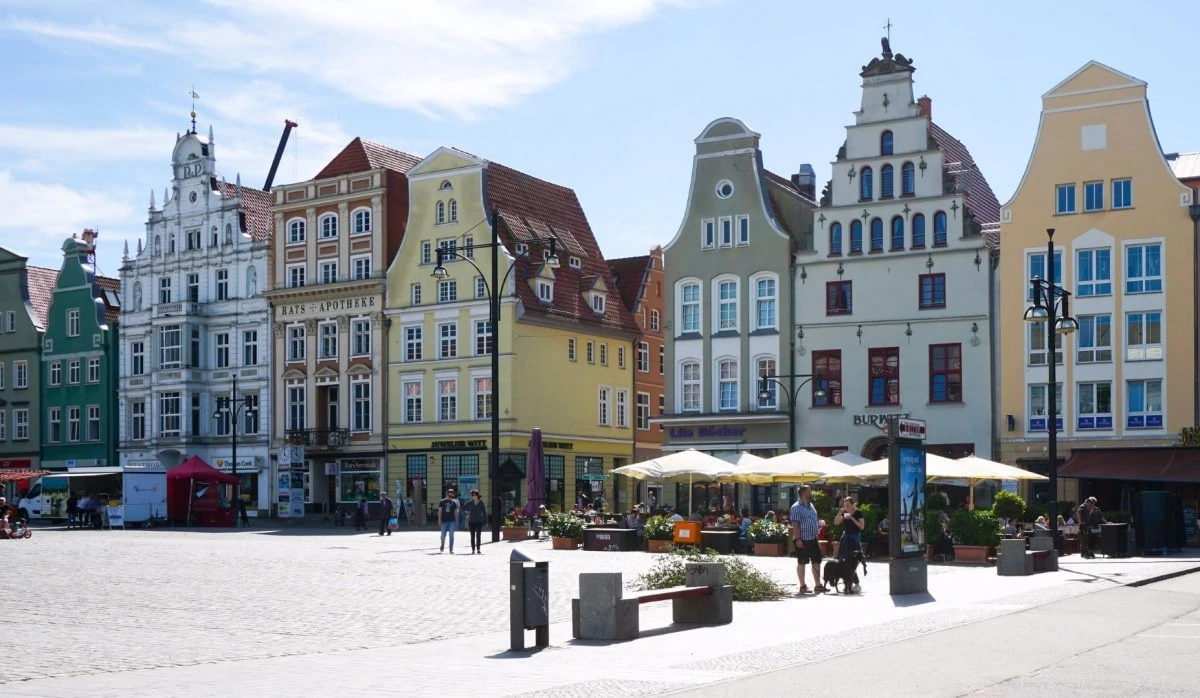
Aachen
Explored by Wendy Werneth of The Nomadic Vegan
Most German cities, such as Berlin, Frankfurt or Hamburg, are known for their modern architecture and futuristic skylines. But Aachen is one place in Germany that still oozes ancient history. While it’s also known for its wellness centres and spas, history buffs come to Aachen to see the Palace Chapel inside the Aachener Dom (the Cathedral).
Charlemagne built an imperial palace for himself in Aachen in 800 AD and made it his winter capital. While most of the palace has since been destroyed, the Palace Chapel miraculously remains intact and has been incorporated into the Cathedral. Coronations of rulers of the Holy Roman Empire took place here for the next several hundred years, and the marble throne where Charlemagne himself once sat still takes pride of place.
To visit the Palace Chapel, you will have to join a guided group tour, which unfortunately is available only in German. It’s absolutely worth visiting, though, even if you can’t understand the tour commentary. The marblework and mosaics inside the chapel are breath-taking. This was the very first building in Germany to be recognised as a UNESCO World Heritage Site, so there’s no doubt it’s one of the most important historical locations in the country.
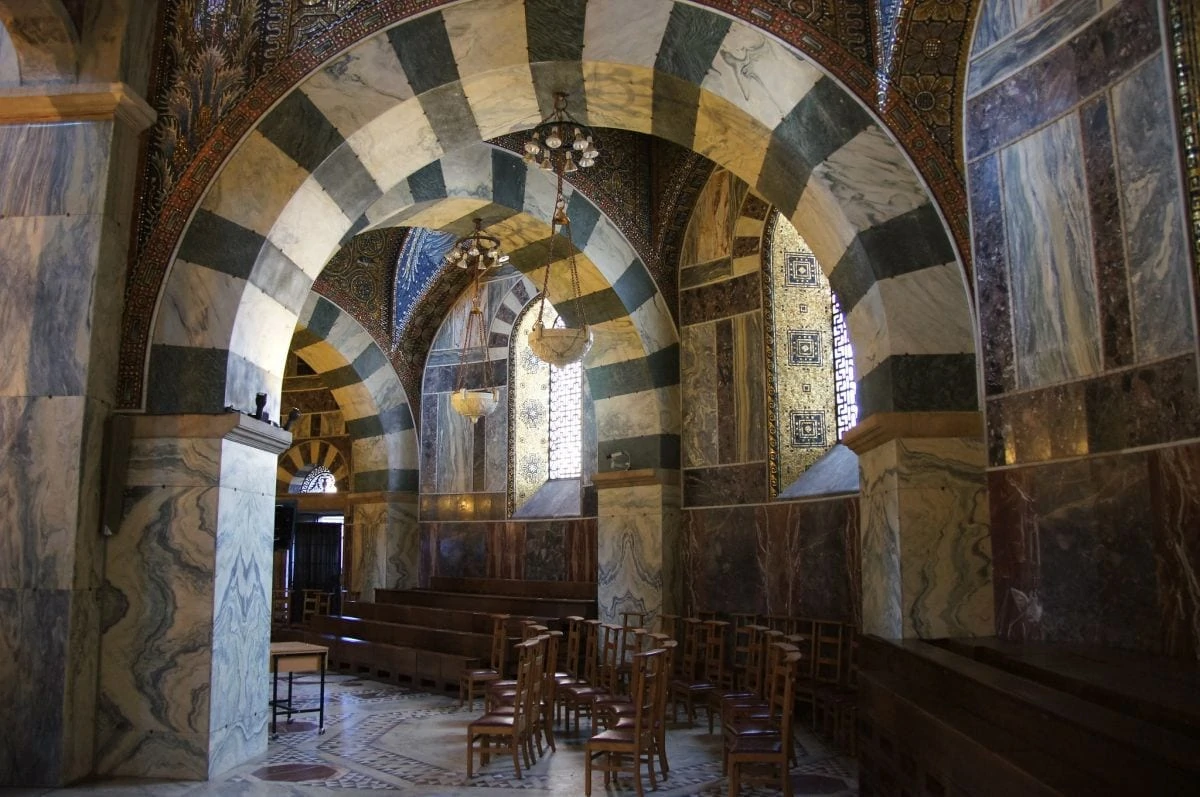
Ahr Valley
Explored by Sabrina from Moon & Honey Travel
The Ahr Valley (Ahrtal) is a narrow river valley in Rhineland Palatinate and North Rhine-Westphalia. If you’re visiting Cologne or Bonn, the Ahrtal is an easy day trip from both cities.
This hidden gem is actually Germany’s largest red-wine growing region. Here, you can try celebrated Spätburgunder (pinot noir), Portugieser, Dornfelder, and Frühburgunder wines.
The best way to experience the Ahr Valley is by hiking the Red Wine Trail (Rotweinwanderweg). This gentle walking route weaves through vineyards and drops into charming wine-making villages. Think of it as a pub crawl with lovely views and some easy hiking.
The Rotweinwanderweg is 35 km total, starting in Altenahr and ending in Bad Bodendorf. The most scenic stretch is from Altenahr to Marienthal. Read this Ahr Valley travel guide for tips on where to drink and eat along the trail.
As you hop between Weinstuben and Weingarten, remember these helpful phrases: “Prost” (Cheers); “Ich hätte gerne ein Glas Wein” (I would like a glass of wine); “Bitte noch ein Glas” (Please one more glass); “Ich würde gerne eine Flasche Wein kaufen” (I would like to buy a bottle of wine).”
Happy hiking and wine tasting drinking!
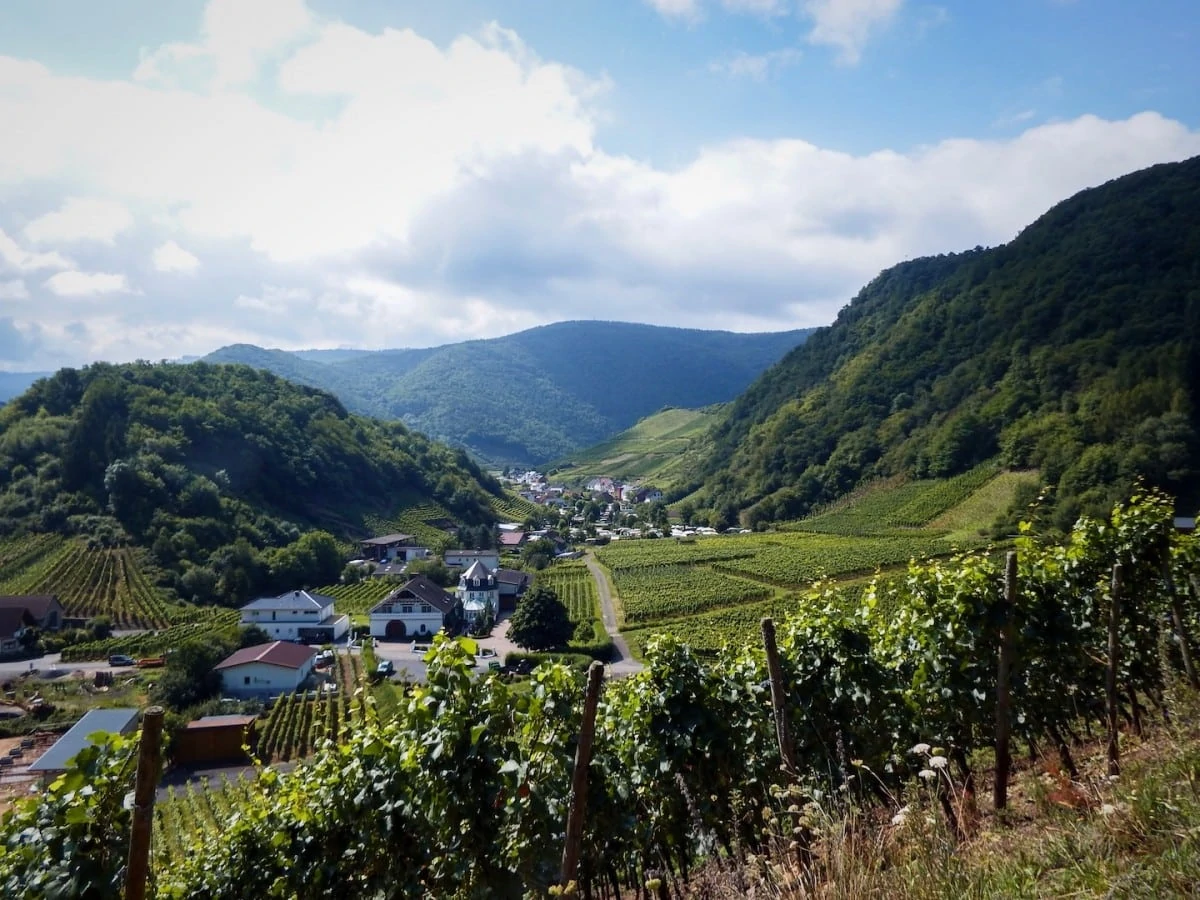
Bacharach
Explored by Michelle of That Texas Couples
There are so many hidden gems in Germany and the charming town of Bacharach is no exception. Located in the UNESCO World Heritage portion of the Rhine Valley, Bacharach will surely steal your heart.
Bacharach has been attracting people to its small village for years, as royalty throughout history would demand Riesling wine from Bacharach. Nowadays, visitors can enjoy walking in the vineyards to see exactly how these amazing grapes are grown and, of course, do a wine tasting.
While visiting Bacharach, you will also want to see the Wernerkapelle Ruins. These ruins have such a fascinating history and are now a UNESCO protected site too. After viewing the amazing ruins, make your way up to Stahleck Castle. Stahleck sits high atop a hill overlooking the town of Bacharach and the beautiful Rhine River. The castle is now a youth hostel, but anyone can go up and enjoy the stunning views from their courtyard. Of course, you can also walk the historic town walls and see the incredible towers that still stand guard over Bacharach.
Overall, Bacharach is a quintessential German town that will make you feel like you have been transported into a fairy-tale!
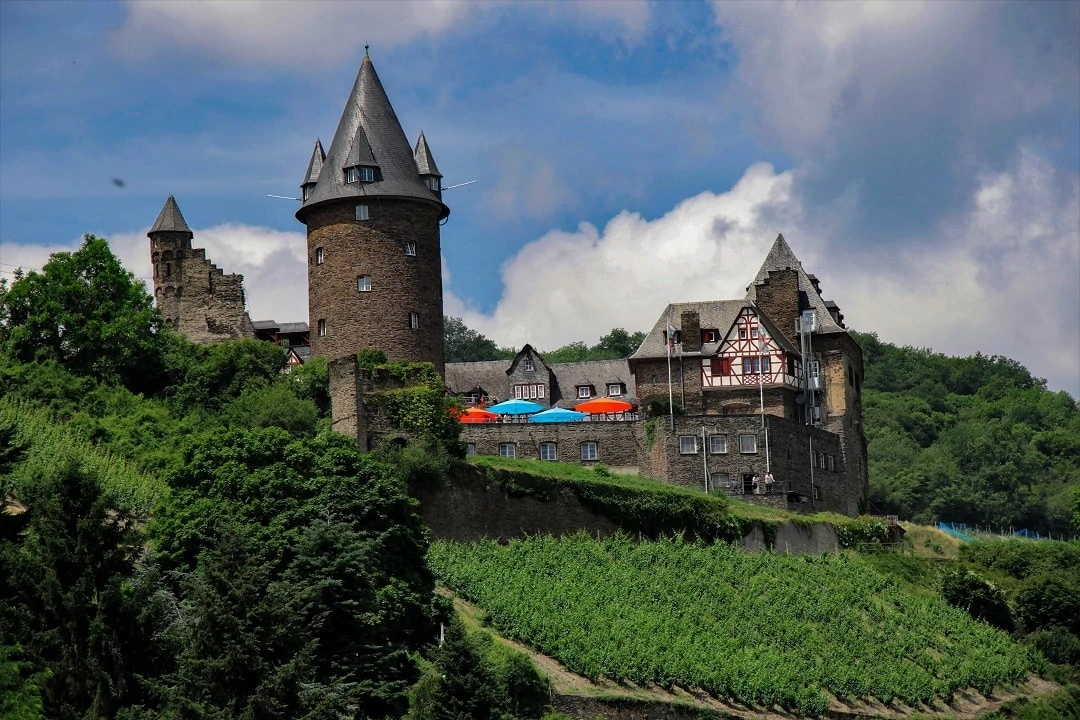
AlpspiX
Explored by Darek and Gosia from Darekandgosia.com
One of the hidden gems in Germany is AlpspiX, located near Zugspitze and Garmisch-Partenkirchen. The viewing platform hangs at an altitude of 1000 m, thus allowing you to admire the beautiful Alpine landscape, albeit with a touch of fear!
Here, rocking in the clouds takes on a whole new dimension! The AlpspiX viewing platform is located 50 m above the Alpspitzbahn upper station, near the Zugspitze (the highest mountain peak in Germany) and allows you to admire the world from a height of over 2,100 m above sea level.
AlpspiX has the shape of the letter “X” – the steel structure consists of two crossed arms 24 m long and 3 m wide each. At the ends of both there are observation terraces – they are located above an abyss with a depth of almost 1000 m, making for a hair-raising drop. Luckily the floors are lined with a grate, with glass walls at each end.
Are you brave enough to enter AlpspiX? It really is one of the most unique places in the Bavarian Alps and one of the most adventurous things to do in Germany!
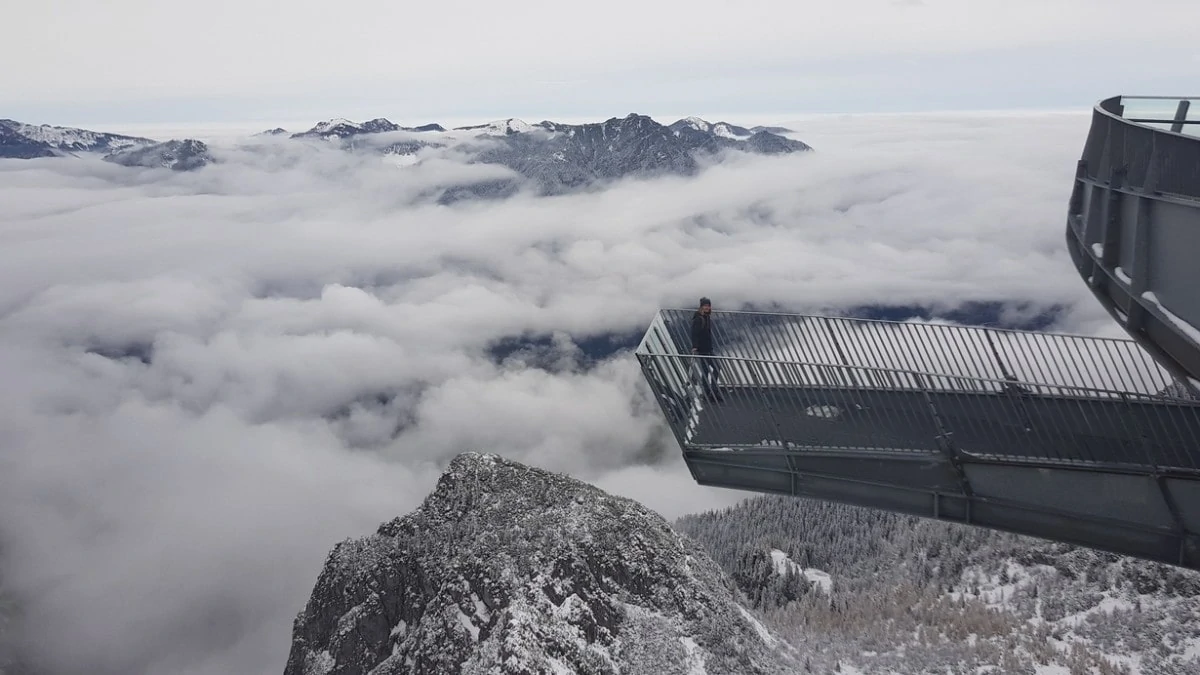
Goslar
Explored by Vicki from Vickiviaja.com
Many travellers who are looking for the typical small fairy tale German village with half-timbered houses are more likely to search in the south of the country. However, many don’t even know that there are some great and lovely cities to discover in the northern part of Germany as well. My hometown Goslar is such a town. It is located in the state of Lower Saxony, at the foot of the Harz Mountains.
A medieval atmosphere spreads through the narrow streets of this town as it is filled with impressive buildings and old half-timbered houses. Walk along the Gose, the small river that flows through Goslar, discover beautiful houses, each of which is unique, and enjoy a freshly brewed German beer.
Many visit the small town due to its imperial palace, which is located in the city centre. As its name suggests, this fascinating building was once the summer home of numerous important German emperors.
Moreover, you shouldn’t miss the former mine that made Goslar a rich trading town in the Middle Ages. You can still enter the mine, which is also a UNESCO World Heritage Site, and have a look around its narrow tunnels.
Goslar is also a perfect starting point for a day trip into the surrounding nature. With the Harz Mountains right in front of the door, there are countless destinations in the region, where everything from old castles, ski areas, and extraordinary hiking trails can be found.
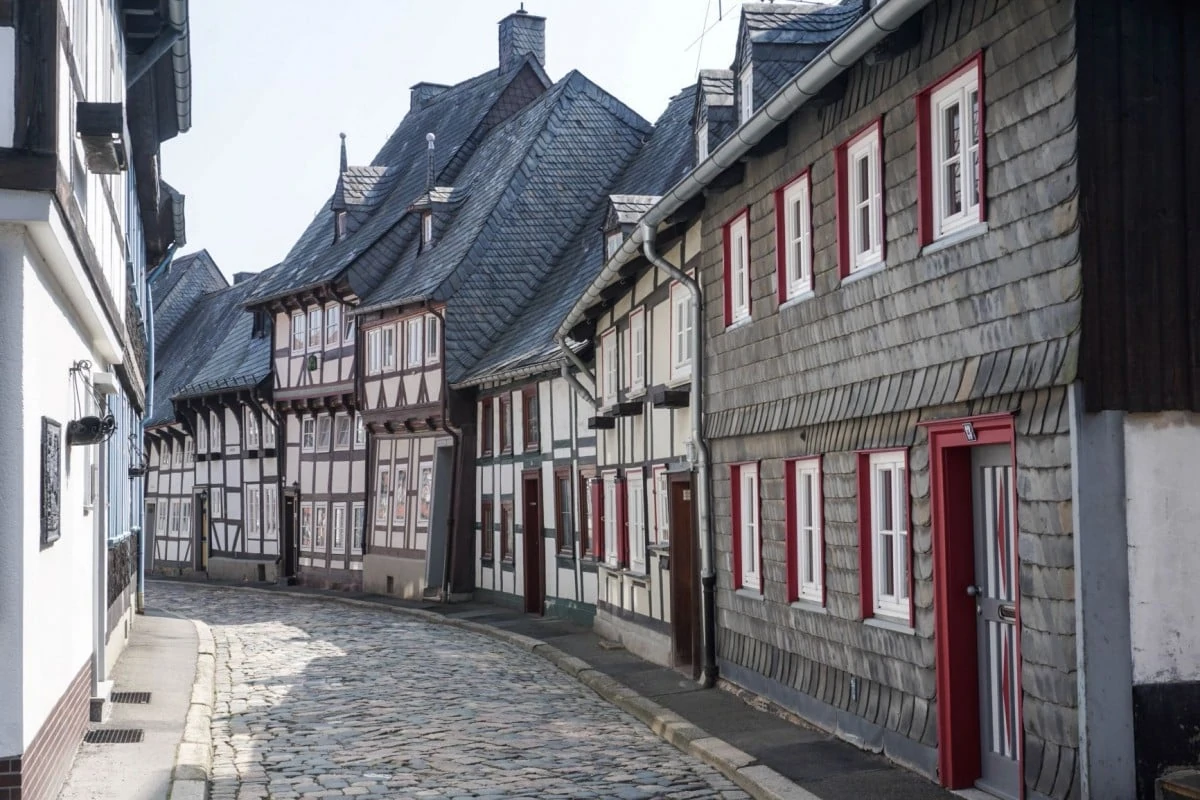
Blautopf
Explored by Lee from The Travel Scribes
The stuff of fairy tales, the Blautopf (‘Blue Pot’) is a spring in Southern Germany – folklore says that its colour comes from a vat of ink, poured into the water every day. However, the water’s bright blue colour is the result of limestone in the water, almost like Blue Lagoon in Iceland.
The natural spring is located in Blaubeuren, not too far from Ulm, where the river Blau flows into the Danube, the second longest in Europe. So, this spring water will make its way through 4 European capitals, Vienna, Bucharest, Budapest and Belgrade, 10 countries, before being deposited into the Black Sea!
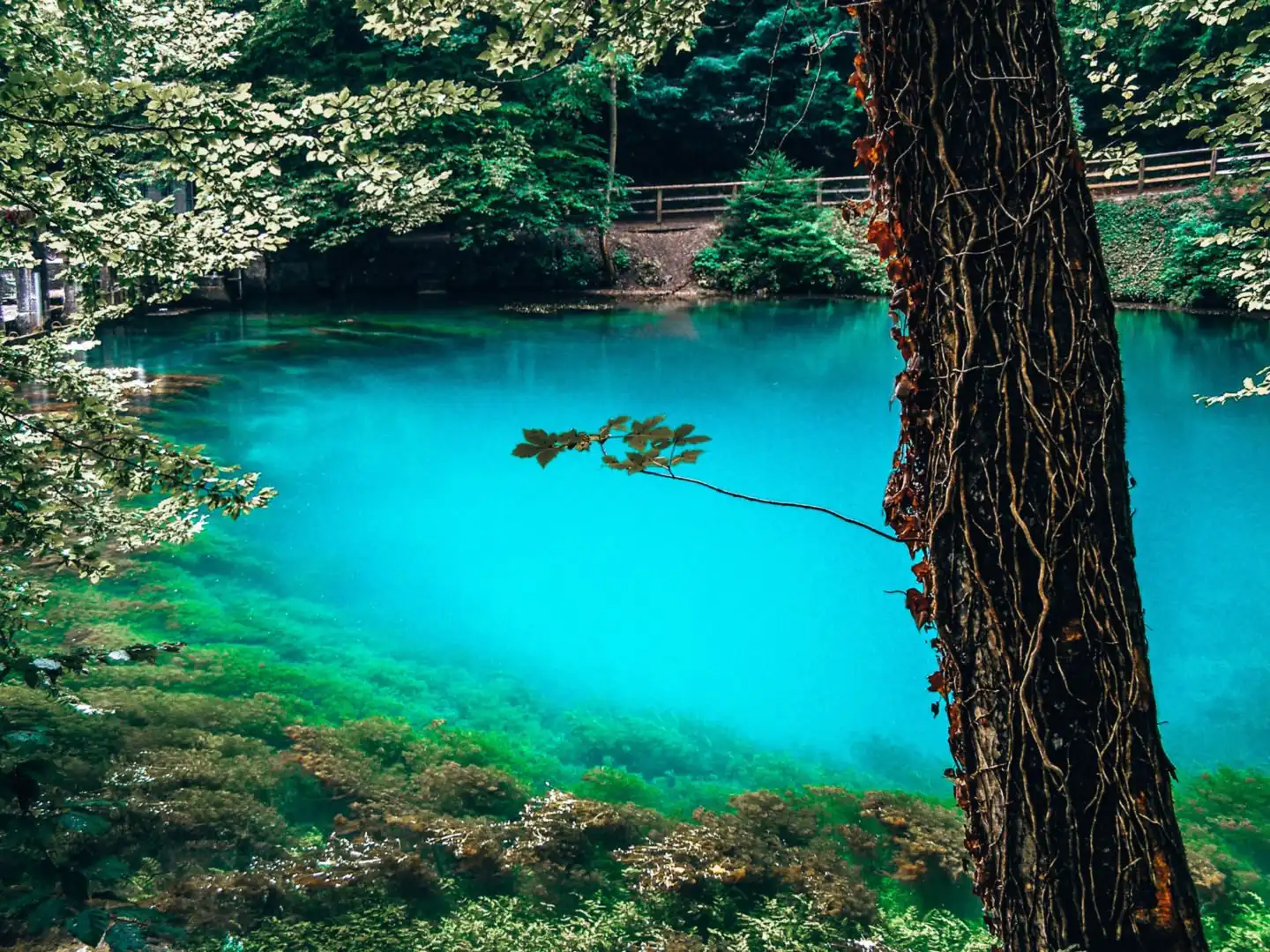
Do you think that we’ve left anything off the list of the ultimate hidden gems in Germany? If so, let us know in the comments below or drop us an email here.
You can also find more Germany travel tips in our guides to this captivating country here.
Want to save this for later? Why not pin it…
